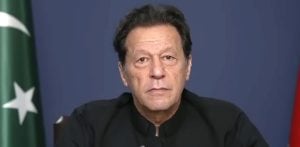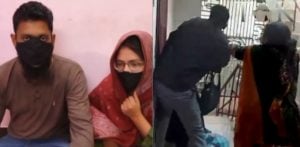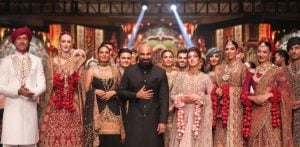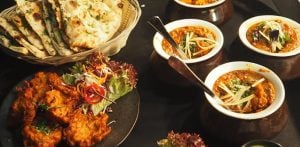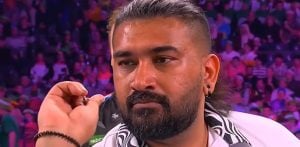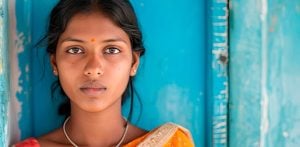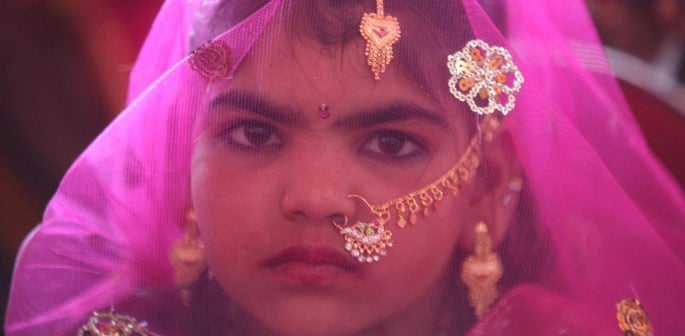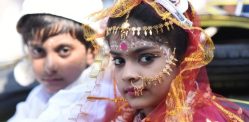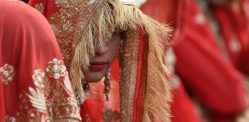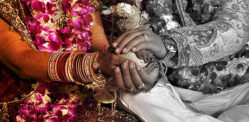The sexual objectification of women is a key reason
Child marriages have been prevalent in India for several centuries. It had become a norm in society to get underage children betrothed in a matrimonial union.
Yet, most of the child marriages were between child brides and much older men.
The tradition of child marriages discloses many forms of discrimination present in India.
From patriarchal gender inequalities, sexual objectification of women and denial of human rights.
We explore the origins of India’s child marriages and its taboo, problematic status in modern-day society.
Traditions, Sexual Control and Discrimination: The many Origins behind India’s Child Marriages
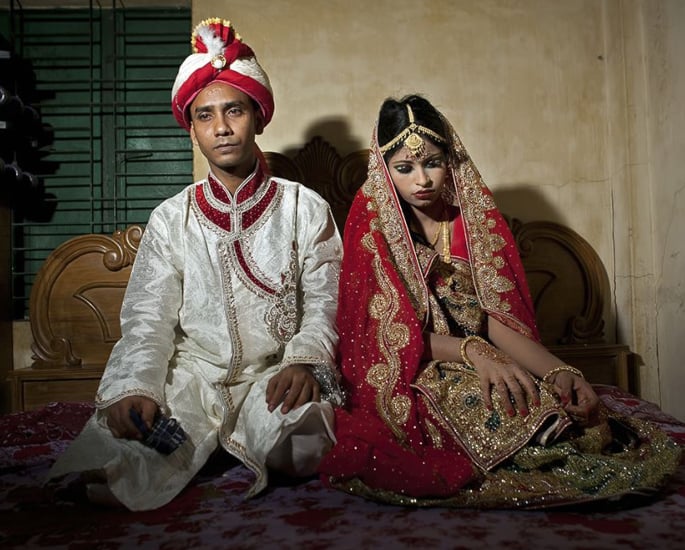
The practise of child marriages has been a part of Indian society for centuries.
This custom can even be dated back to medieval times. Despite the development and progression throughout India since, child marriages continue to persist.
For many, child marriages are a part of cultural traditions. Traditions and cultural values are an important convention of Indian society. Many rituals have a significant part in the lifestyles for many groups and tribes.
Thus, child marriages continue to be the norm for many individuals, commonly, underage girls.
During and particularly pre-20th century, it was usual to marry under eighteen years old.
Famous couples who married when they were underage include, Mahatma Gandhi and his wife Kasturba. Gandhi was 30 while his wife was a mere 14-year-old.
It was further normal for a bride and groom to have a large age gap between them. Often, it is a child bride, married off to a man many years her senior.
The age gap, however, was not initially seen as an issue and was accepted throughout history.
This practise is still widespread in many places. For instance, Rajasthan, Haryana and West Bengal are some of the Indian states where child marriages continue to take place frequently with large age gaps too.
Arguably, the want to have a younger wife root back to ideas desiring a ‘pure’, virgin woman. The belief of an unmarried, youthful woman being ‘purer’, is still the derogatory demand of many.
Irrespective of how old the groom is, they continue to want a younger bride even if it is a child. This increases the longevity of having a youthful wife, hence increasing the sexualisation of children.
The sexual objectification of women is a key reason behind child marriages. This is due to the sexual control of daughters by male figures of the family.
Due to the cultural belief of ‘women holding the honour of the family’, male relatives hasten the marriage of the daughters to ensure the ‘honour’ is maintained.
This is unfair and discriminatory towards women as it denies them sexual freedom. It further limits their choices and control over their bodies and most importantly, their life.
It is also an example of double standards and gender inequality. Men are not subjected to the same sexual control nor are they expected to remain ‘chaste’.
Yet a woman, regardless of age, is not allowed to be as free as the family honour depends on her. This means she has no independence of her own in various aspects of her life.
Marriage for many young women in India is a part of patriarchal oppression. Before marriage, a woman belongs to her father, after she is the property of her husband.
Thus, she goes from being responsible for the honour of her father to the honour of her husband. This view is supported through ‘paraya dhan’, which is a belief held by many families.
‘Paraya dhan’, means ‘someone else’s wealth’, therefore it is believed a daughter, a woman, is someone else’s belonging.
Again, this is a form of denying a woman her existence as an individual. She is only considered to be the property of others.
These demeaning views regarding women have caused the existence of child marriages to be maintained.
The continued acceptance of underage girls with much older men has also allowed and encouraged paedophilia.
This is dangerous for vulnerable children, not only are they sexualised, but their innocence is also preyed upon. Therefore, the practice of child marriages only adds to the oppression of women.
To protect children and women, in general, laws were enforced to stop child marriages.
Since 1929, child marriages in India became banned. The Child Marriage Restraint Act, also known as the ‘Sharda Act’ became a symbol of change.
The legal age for marriage for a woman became 18 and 21 for a man. Regardless, India still has over 15 million underage child brides and the statistic continues to increase.
Law enforcement often overlooks or turn a blind eye despite being aware child marriages continue to take place.
The Child Marriage Restraint Act was organised by the women of India thus becoming the first social reform change caused by women. It also had the support of Gandhi who argued against child marriages.
The law was to bring change to the lives of underage children. Yet, it could not change the fate of many underage children who continued and continue to become victims of child marriages.
A few years after the Child Marriage Restraint Act was passed, the rate of underage child brides continued to increase.
Census’ showed an increase from 8.5 million to 12 million underage child brides. This shows how despite laws made to protect children, they were still thrown into marital life.
Bride Buying and Burdens: Why the Practice of Child Marriages Still Continues

Child marriages, despite being illegal in many Indian states is still evidently widespread in India even in modern-day.
Often, it is due to financial difficulties which lead to families giving away their young daughters. They cannot afford to feed their children due to poverty and lack of job opportunities.
Other times, society views daughters as burdens; a financial drain on the family. Due to this, daughters are married off, regardless of their age.
As a result, child marriages are most common in poverty-stricken families. Due to the view of daughters being a financial burden, they are married off before the sons.
The younger the bride, the less her dowry is. Due to this, child marriages become a more affordable option for poorer families.
The level of education for women in poorer regions and families is low. This is because of the continued belief in gendered stereotypes.
For instance, in many rural parts of India, they believe the son will look after them in old age while the daughter is the property of another family.
Due to this, they invest more money and time in educating their sons rather than their daughters.
They believe their sons benefiting them more than their daughters who are deemed as being economic burdens or just an additional mouth to feed. This leads to ‘Molki’ marriages.
The custom of ‘Molki’ was traditionally a poor family marrying off their daughter to a wealthy husband.
This was for financial security. The husband would pay a sum of money to the bride’s family in exchange for her.
‘Molki’ ensured the daughter lived with stability as did the members of her maternal home. It was an arrangement which ensured the wellbeing for all parties involved. It did not deny rights for the bride.
Yet, in modern-day, ‘Molki’ weddings are considered to be a form of bride buying.
What was meant to be the true meaning behind ‘Molki’ weddings, has drastically changed. It’s initial custom to help impoverished families and ensure young daughters lead a stable life has been removed.
‘Molki’ weddings now consist of retailing and trading women into a life of exploitation. In turn, reducing their worth and honour.
This is because ‘Molki’ brides are typically subjected to sexual and physical abuse. They are treated as bounded slaves and are forced into prostitution for male family members other than their husbands.
They are not given the status of a wife nor respected as they were ‘brought’.
This is a form of modern-day slavery. As for, ‘Molki’ brides, with no liberty, are treated as property and are in the ownership of wealthy individuals.
For other ‘Molki’ brides, they commonly face the wrath of community members.
The name itself ‘Molki’ becomes a slur as they are undermined through references such as ‘molkis’. This means ‘brought with money’ to make them feel inferior.
They are further discriminated against due to their caste and poverty. The latter which leads to stereotypes placed onto their families as being sellers and thieves.
Therefore, the tradition of ‘Molki’ is no less than human trafficking itself.
However, because the individual is married, violence and oppression are not taken into consideration. It is as if marriage allows atrocities to be committed.
The Life of a Child Bride: What is it really like to be a child bride?

Child marriages lead to childhood getting cut short. Once the marriage ritual is complete, so is their childhood.
After becoming a ‘wife’, the underage bride is expected to only do household duties. The age and vulnerability of child brides are issues which remain ignored.
The typical role of the housewife is assumed. However, the difference is they are denied the right to do anything but cook, clean and serve the family.
Lack of rights and lack of freedom; is this life any different than being a bonded slave?
The child bride is reprimanded from continuing or even beginning their education. This decreases their future prospects greatly as it halts their potential progress.
For instance, they are also stopped from working unless forced into labour in the family farms.
Instead of education, they are forced into labour as they are considered as being most productive due to their youth.
With no job opportunities, no education and no support, the underage wife is often left with no choice but to live out her fate.
For some, domestic abuse quickly becomes a part of their marital life, unquestioned and unchallenged by onlookers.
Physical and sexual abuse acts as part and parcel of child marriages. Studies from 2014 show underage brides in child marriages are more likely to be at risk of physical and sexual violence. This risk has increased over the years.
Due to the stereotypical gender expectations of a wife, she is expected to have children. This leads to rape cases increasing while mortality rates for the underage wife and unborn baby decreases.
Pregnancy and childbirth are the second leading cause for the death of under 18s. As soon as a girl gets her period, she is deemed appropriate for marriage and motherhood, despite her body only just developing.
The fact that she is still a child is dismissed, in turn, risks of childbirth for the pregnant child are too.
This questions the ‘honour’ and ownership put on women. How is violence, oppression, exploitation a form of maintaining ‘honour’?
According to the NPR.org statistics, approximately 1.5 million underage girls are married off every year.
That is 1.5 million victims of child marriages a year in India alone.
UNICEF’s statistics show more than 40% of child marriages come from South Asia. Almost half the victims of this crime are from one part of the world.
India itself is responsible for 47% of the world’s child marriages. Yet, Indian law enforcement continues to turn a blind eye.
However, some states in India have ensued incentives to prevent child marriages.
For example, in Haryana, where child marriage rates are high, they have begun the scheme ‘Apni beti, Apna dhan’.
The scheme, meaning ‘my daughter, my wealth’ was introduced to prevent and decrease the rate of child marriages.
It also encourages families to positively care for their daughters rather than treating them like ‘parya dhan’.
This scheme gives families a sum of money once their daughter turns eighteen and is not married. This helps prevent her from becoming a victim of child marriage.
The coronavirus pandemic has led to a surge of child marriages across India. It has put more underage children at risk.
The pandemic increased financial issues on poorer families. This highlighted the fact that daughters are still seen as liabilities.
However, some families, despite not wanting to marry off their underage daughters, believed they had no choice.
This is due to the lack of resources available to help make development in rural Indian societies. The stagnant stereotypical beliefs and gendered discrimination allow child marriages to be practised.
Without challenging age-old traditions and discriminations, child marriages continue to exist. They become a possibility for many.
Child marriages still take place in India, irrespective of laws and shift in beliefs. Traditional and cultural values stop being points of pride when vulnerable members of the same traditions and cultures become demeaned, oppressed and exploited.
For change to occur awareness must be raised for victims of child marriages.
To help put a stop to child marriages donate below:
- Girls Not brides Campaign: Supports and takes care of underage girls across the world, including India
- CRY organisation: Child rights and prevention of child marriages in India
- UNICEF: End child marriage in India







